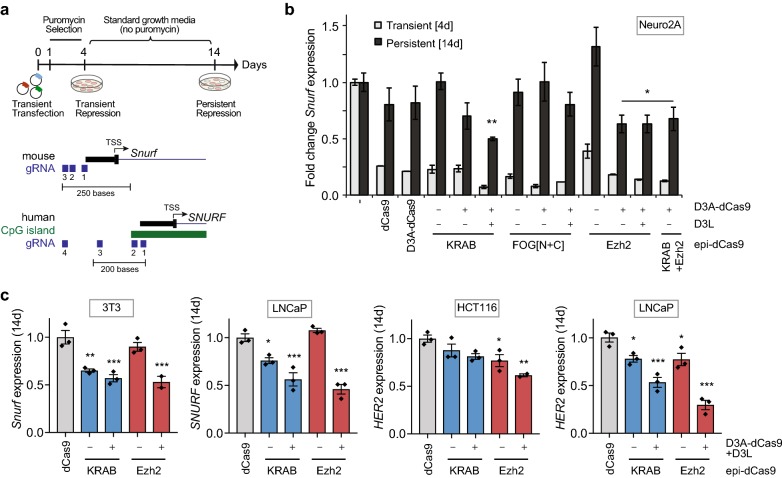Fig. 2.
Establishing long-term repression by combinatorial Ezh2-dCas9 or KRAB-dCas9 treatment is context-dependent. a Diagram of experimental design for transient transfection assays with puromycin enrichment to assay for transient (4 days) and long-term (14 days) repression. A detailed view around the mouse Snurf and human SNURF promoter region shows gRNAs target sites (blue boxes) and an annotated CpG island (green bar). The transcription start site (TSS) is indicated. b RT-qPCR of endogenous Snurf mRNA levels in Neuro2A cells 4 days (transient) and 14 days (long-term) after co-transfection of plasmids expressing three gRNAs targeted to the Snurf promoter and the indicated epi-dCas9 fusions individually or in combination with D3A-dCas9 with or without simultaneous overexpression of DNMT3L (D3L). Snurf mRNA levels were compared to dCas9 with no ED (Tukey-test, *P < 0.05, **P < 0.01, n = 2–3; mean ± SEM). c Long-term repression (14 days) resulting from epi-dCas9 fusions ± targeted DNA methylation (D3A-dCas9 and overexpressed D3L) compared to dCas9 with no ED was determined at two different target genes (Snurf, SNURF or HER2) by RT-qPCR in the cell lines indicated (Dunnett’s test, *P < 0.05, **P < 0.01, **P < 0.001; n = 3; mean ± SEM)

